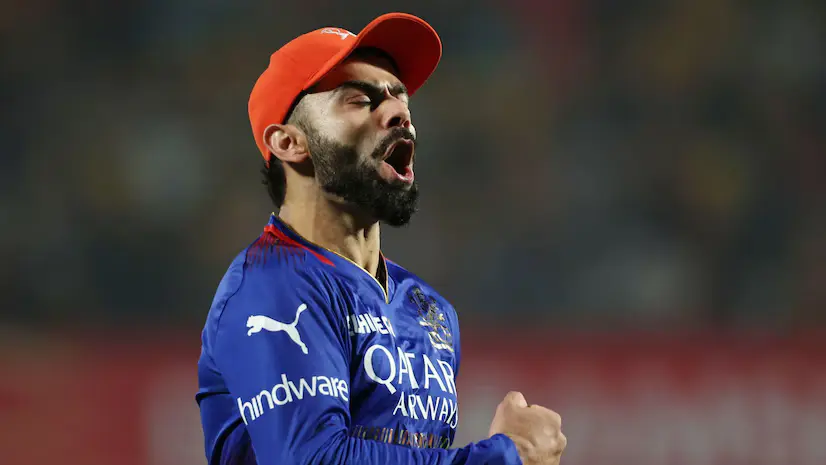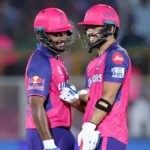As the IPL 2025 season heats up, one of the most discussed topics in Indian cricket circles has resurfaced: the Virat Kohli strike rate debate. While Kohli remains one of the tournament’s leading run-scorers, questions continue to be raised about whether his tempo aligns with the aggressive demands of modern T20 cricket—especially when playing for a team like Royal Challengers Bengaluru (RCB), where power-hitting depth is a critical asset.
The Numbers Behind the Conversation
Kohli’s 2025 IPL season has once again demonstrated his consistency with the bat. He has crossed the 500-run mark this year, featuring among the top five run-getters in the league. However, what’s caught attention is his strike rate hovering around 135, a figure that pales in comparison to some of the other top-order batters in the league, particularly those with strike rates exceeding 150 or even 160.
Kohli’s IPL 2025 Batting Stats (as of Match 13)
| Matches Played | Runs Scored | Average | Strike Rate | 50s | 100s |
|---|---|---|---|---|---|
| 13 | 538 | 49.00 | 134.62 | 5 | 1 |
While these numbers look impressive in isolation, the strike rate debate emerges when dissected within match context—particularly during chases or high-scoring encounters where acceleration in the middle overs is crucial.
The Role of an Anchor in Modern T20
Kohli has traditionally played the role of an anchor, building his innings through classical strokeplay and measured acceleration. This approach was ideal during the early years of T20 cricket, but with teams now regularly scoring 200+, modern franchises prefer batters who score at 140+ consistently across all phases.
Critics argue that Kohli’s method often puts pressure on middle-order hitters, especially if he consumes too many deliveries in the powerplay without capitalizing in the middle overs. Matches where he scores 60+ at a strike rate of 120–130 have sparked criticism that such innings, while visually solid, can cost teams momentum.
What the Experts Are Saying
Several former cricketers have weighed in on the debate. Former India batter Virender Sehwag recently remarked:
“Kohli has runs, no doubt, but in T20s, 50 off 40 balls is no longer match-winning. Strike rate is as important as average—maybe more.”
On the other hand, Sunil Gavaskar has defended Kohli’s style, emphasizing experience and adaptability:
“He knows when to shift gears. Not every innings is about brute force. You need someone to bat through and anchor as well.”
Kohli’s Impact in Context: Match Situations Matter
While the criticism may seem justified in certain slow-paced innings, it’s worth noting that Kohli has adapted well when the team required fast starts. In matches where early wickets fell, he has shouldered responsibility and guided the innings. In games where quick scoring was the need, he’s rotated strike intelligently and opened space for other hitters like Glenn Maxwell or Rajat Patidar to explode.
Notable Innings This Season
- 104 off 63 vs Rajasthan Royals* – Anchored RCB to a winning total, despite wickets falling at the other end
- 70 off 44 vs CSK – Solid powerplay start but drew mixed reactions for not accelerating post 30-ball mark
- 34 off 28 vs GT – Criticized for strike rate under 125 in a high-scoring loss
The Bigger Picture: Can Kohli Adapt Without Compromising Identity?
Kohli’s batting approach remains rooted in technique and timing, not muscle. While his T20 adaptability has evolved over the years, the modern format may be evolving faster. The question now is: Can Kohli maintain his volume of runs while increasing his strike rate during key phases?
It’s a delicate balance. As a senior player and team icon, Kohli’s value goes beyond numbers—but in a tournament dictated by net run rates, boundary percentages, and intent-driven metrics, legacy alone cannot outpace the pace of the game.
Final Thoughts
The Virat Kohli strike rate debate isn’t about questioning his greatness—it’s about aligning greatness with the needs of the present format. He remains one of IPL’s top batters and a brand in himself, but as cricket continues to favor aggression over accumulation, Kohli’s next phase as a T20 batter may require a recalibrated approach.
In a league where teams chase 200+ regularly, the ability to score at 140+ strike rate is no longer optional—it’s essential. If Kohli finds a way to marry his consistency with modern-day tempo, he won’t just silence the debate—he’ll reinvent himself once again.












